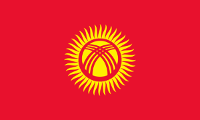Hungarian language, weirdness with 1st and 2nd person pronouns
I mentioned previously that Hungarian verbs have indefinite and definite conjugattions. Here is the past tense conjugation of the verb 'see.'
| Indefinite | Definite | |||
| Singular | Plural | Singular | Plural | |
| 1st | láttam | láttunk | láttam | láttuk |
| 1st to 2nd | láttalak | |||
| 2nd | láttál | láttatok | láttad | láttátok |
| 3rd | látott | láttak | látta | látták |
So here are some example sentences:
| János saw Ágnés at the park. | János látta Ágnést a parkban. |
| Ágnés saw János at the park. | Ágnés látta Jánost a parkban. |
Notice that the verbs are both in the definite. But now let's look at what happens if the direct object is a first- or second-person pronoun:
| János saw me at the park. | János látott engem a parkban. |
| Ágnés saw us at the park. | Ágnés látott minket a parkban. |
Now isn't that odd. 1st and 2nd person pronouns are about as definite as you can get. Generally definite direct objects co-occur with definite verbs, but first- and second-person direct objects co-occur with indefinite verbs. I admit to major discombobulation on this issue. I don't think I've ever seen anything that makes less linguistic sense than this.
No feedback yet
Form is loading...

